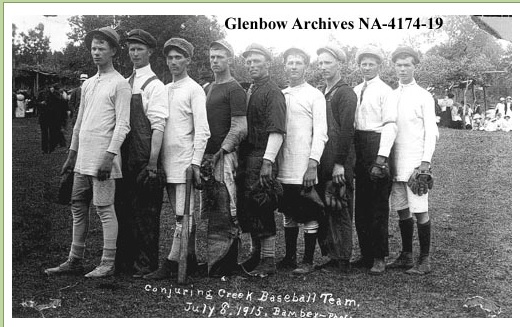Some Rural Baseball Legends Might Be True
Posted April 29, 2013

Everyone who has ever played baseball always hears stories of some legendary talents toiling away in some backwater town off the grid. When I was growing up I often heard about some big farm kid from Mirror that could hit a baseball a quarter mile. His name was Shane Stenerson, and I had the pleasure of playing with him for a couple of years. He wasn’t the giant the stories made him out to be, probably 6’0″, 220lbs of farm muscle, and he might not have been able to hit it a country mile, but I still have not played with or against a guy who could hit it as far as him, just pure raw power. I believe he still holds the Norwest Midget AAA record for home runs in a season, and he did it as a first year midget. Pitchers soon wised up and pitched around him. He went down to the states for college ball, which back then mostly only the elite got to do. For some reason his genius college coaches valued his arm strength on the mound more than his ability to hit a baseball 500 feet and wouldn’t let him take hacks so he packed up and came home to play some senior ball before retiring in his early 20s.
Even players in the majors have their own legends, especially before integration. Even recently Sports Illustrated ran an article about a kid named Brian Cole titled “The Best Player You Never Saw”. There is a movie supposedly in the works on the subject. Cole was a Mets draft pick from the deep south who had all world power and speed in 5’8″ 160lb package whose exploits still have future Hall of Famers like Pujols and Sabathia in awe even a decade after his death in a traffic accident.
Most often than not the legends are either straight up farces and fish tales or have been greatly exaggerated over time. When I was playing in the North Saskatchewan River Baseball League one year we started hearing all these stories that North Battleford had picked up this superstar five tool player that could throw 95 mph, hit bombs and run faster than Ben Johnson. When we eventually squared off with the Beavers half our team was quaking in their cleats at the sight of this phenom, probably in part because he was the only black kid north of Saskatoon. Turned out he didn’t pitch, didn’t hit moon shots, and after the fear and awe subsided we crushed them. He did run like the wind though.
Now since the Powerline Baseball League is about as rural and backwoods as it gets around here there are many a tall tale and legend to be told. Heck we even have a “Legend” currently on one of the rosters of the team that claims to be the longest continuous running baseball team in Canada, the Bardo Athletics. The Athletics even made a bid in the 70s to get in the Guinness Book of World Records for a triple play they turned to clinch the PBL championship.
It turns out however that a place even smaller and more desolate than Bardo actually once had one of the best pitchers on the planet suit up for them. Conjuring Creek, which is nothing but a condemned curling rink now had a ball team that was founded in 1902 and played out of the Glen Park League against teams from Millet, Leduc, Devon, Calmar, Warburg, and some other hamlets that only exist as a community halls now. Despite being pretty well written off the map now, Conjuring Creek’s ball team had at its disposal one of, if not the best pitcher to play for an Alberta team until at least the Cannons and Trappers came into the Pacific Coast League.

Vean Gregg, a tall left hander with a good fastball and great curveball that came to prominence with the Cleveland Indians in 1911 some how made his way to rural Alberta in 1918. After becoming the only major league pitcher in the history of the game to win twenty games in his first three seasons, plus an ERA title in his rookie season, Gregg ran into arm trouble that caused him to go from rivaling Walter Johnson as the most dominant pitcher in the game to an inconsistent, middle of the pack hurler. After his first three seasons had the Indian’s faithful dreaming of championship banners Cleveland panicked and quickly traded him to the Red Sox in 1914, who went on to win the World Series. The sore arm persisted though and Boston grew tired of waiting for a return to form so they sent him to the minors. After a dominating rehab season in the minors in 1917 he was traded to the Athletics, but his 1918 season was mediocre so he decided to retire and try his hand at farming after purchasing some land in Conjuring Creek Alberta.

For the next three years he farmed and pitched for the local team and was quite content, but then crop prices fell and he needed to pay the bills so he had to get back into the pro ranks as he made his way to Seattle to pitch in the Pacific Coast League. By then he had earned the nickname “Alberta Ace”, and he still returned to the farm in the off season. After three decent seasons in Seattle, due in part to the fact that he was grandfathered to still throw the spit ball, the Washington Nationals wanted some relief help in 1925 to try and defend their title and they purchased his contract. Gregg initially failed to report and threatened to go back to the farm before agreeing to a signing bonus that included paying his farming expenses. He had a tough season out of the pen and was optioned to the minors before the end of the year.
After that he returned to Conjuring Creek before one more kick at the pros in the Pacific Coast League in 1927 before retiring for good. He went back to the farm life, but would eventually move back to his home state of Washington to live out his remaining years. He was voted the greatest left handed pitcher in Indians history in 1969 by the fans, and if not for his arm troubles most baseball historians believe he would be a lock for Cooperstown. But then again it was his arm troubles that brought him to Alberta, so it wasn’t that bad of a consolation prize.
For more info on Gregg and Conjuring Creek you can check out this link to this week’s Pipestone Flyer article ( http://www.pipestoneflyer.com/Article.asp?id=3129 ) or you can just google it.
Posted on April 29, 2013 by Steven Pahl







